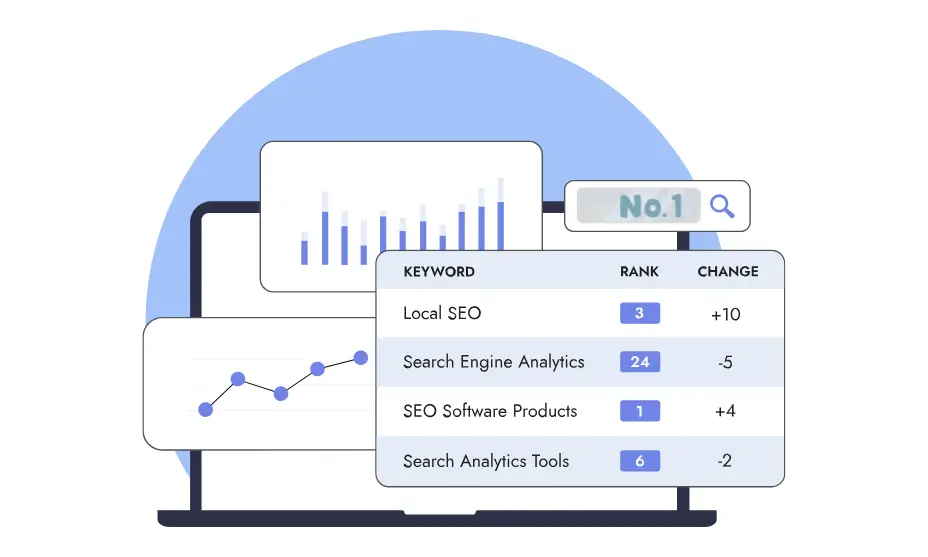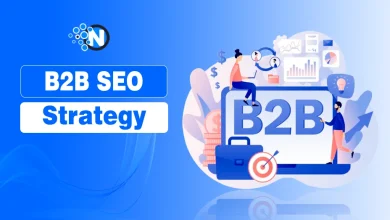
Ranking your website on Google in 2025 is no longer about stuffing keywords or building random backlinks. Google’s search algorithm has become incredibly advanced while using artificial intelligence, user behaviour data, and over 200 known ranking signals to determine which sites deserve top placement in search results.
Google always tries to strengthen its ranking policies to allow only the best sites to reach the top to enhance the visitors’ knowledge.
If you are a website owner looking to rank it for particular queries, you must comply with the necessary ranking factors.
Here in this guide, with the help of my SEO and content team, we have developed some of the 10 Google ranking factors to monitor in 2025.
What Are Google Ranking Factors?
Generally, Google ranking factors are defined as the criteria by which websites attain their positions in the search results.
Previously, you didn’t have to face many difficulties while ranking your site in the search engines. But there has been a tremendous rise in the number of websites.
Google uses both on-page and off-page signals, ranging from keyword placement and site structure to backlinks, content quality, and page speed.

Top 10 Google Ranking Factors in 2025
In this guide, I will inform you about the top 10 Google ranking factors you must consider to improve your site’s rankings in 2025.
1. Content Quality
Content quality is the most influential factor that determines your ranking in the search engine. You should write simple, compelling, and highly informative content so Google bots will acknowledge your efforts and help you rank higher in the search engine.
What Google Looks For
- Uniqueness: Write unique posts and make them plagiarism-free, as Google loves to rank the latest data in the SERP.
- Simple Language: Don’t stuff your articles with difficult words. Consequently, people won’t understand you and hang off on the site, leaving bad impressions.
- Structure: Use headings (H2, H3), bullet points, internal links, and visuals to make your content scannable and engaging.
- Freshness: Outdated information can drop your rankings. Regularly update older blog posts to reflect current trends and facts.
💡Pro Tip:
Use content optimization tools like Surfer SEO or Clearscope to match your content with the top-performing pages in the SERP.
2. Backlinks
Secondly, backlinks are critical to helping you rank in Google. Getting links from high authority sites indicates to Google that your website’s worth and content, and suddenly takes you high in the search results.
What Makes a Backlink Valuable?
- Authority: Links from high-domain authority websites (like Forbes, Moz, or .edu domains) pass significant ranking value.
- Relevance: A backlink from a website in your niche is far more valuable than one from an unrelated industry.
- Contextual Placement: Links placed naturally within the content are more powerful than links in sidebars or footers.
- Anchor Text Variety: Use a mix of branded, keyword-rich, and generic anchor texts to keep your backlink profile natural.
Subject: ………………………………
⚠️Avoid: Spammy or low-quality backlinks (e.g., from link farms, blog comments) can result in manual penalties or algorithmic devaluation.
3. Loading Speed
Another Google ranking factor that you must consider in 2025 is website loading speed. Recently, the search engine has changed its policies and allowed only those sites to dominate the rankings that take less time to load. Hence, the visitors won’t get bored while searching for a query.
Therefore, you must enhance your site’s loading speed. Install the latest WordPress plugins or seek help from a third-party tool to reduce the latency.
Key Speed Metrics
- Time to First Byte (TTFB): The time it takes for your server to respond.
- Largest Contentful Paint (LCP): How long does the main content take to load?
- Total Page Load Time: A fully loaded page should ideally be under 3 seconds.
How to Improve Speed?
- Compress images using tools like TinyPNG or ImageOptim.
- Minify CSS, JavaScript, and HTML.
- Use lazy loading for images and videos.
- Enable browser caching and use a Content Delivery Network (CDN) like Cloudflare.
4. Search Intent
There are several kinds of search intent; you must write as per the latest content writing trends. Google and other search engines are now getting extremely sharp and can easily recognize the users’ search intent.
Common Types of Search Intent
- Informational: “How to train a dog”
- Navigational: “Facebook login”
- Transactional: “Buy iPhone 15”
- Commercial Investigation: “Best gaming laptops for 2025”
How to Align Your Content?
- Analyse the top 5–10 pages in the SERP for your keyword
- Determine what format and depth users expect (blog post, product page, video, listicle)
- Structure your content accordingly
Pro Tip: Use tools like SEMrush or Ahrefs to inspect the intent type of ranking pages
5. User Experience
User experience (UX) affects how users engage with your website, making it a ranking factor. A site with a seamless, straightforward, and engaging UX will keep visitors and inspire them to explore, telling Google your material is valuable.
Positive UX includes clear navigation, understandable layouts, and engaging features. High bounce rates and low engagement metrics imply poor UX, which lowers rankings.
Key Elements of UX:
- Clear navigation and intuitive design
- Low bounce rates and high dwell time
- Readable and engaging layouts
- Accessibility for all users, including those with disabilities
6. Mobile Friendly
A survey revealed that more than 60% of users use mobile devices to search queries. Therefore, consider this wide traffic and install a mobile-responsive theme on your site.
Furthermore, Google has also announced that make your websites mobile-friendly. Otherwise, you may suffer from penalties or decreased SERP rankings.
Key Elements of Mobile Optimization:
- Responsive web design
- Fast loading times on mobile
- User-friendly navigation on smaller screens
- Avoidance of elements like flash
7. Local SEO
For businesses targeting a local audience, Local SEO is indispensable. Optimizing for local search involves creating and maintaining a strong Google My Business (GMB) profile, which includes accurate contact details, photos, and regular updates.
Local SEO also depends on consistent NAP (Name, Address, Phone) information across all platforms. Customer reviews and using location-specific keywords in your content can further boost visibility. Local SEO is especially valuable for queries like “restaurants near me” or “plumbers in [city name].”
Key Elements of Local SEO:
- Google My Business (GMB) profile optimization
- Local keywords in content
- NAP (Name, Address, Phone number) consistency
- Positive reviews
8. Core Web Vitals
Google introduced Core Web Vitals as a ranking factor to emphasize the importance of technical performance and user-centric metrics. These include:
- Largest Contentful Paint (LCP): Measures the time it takes for the largest visible element to load, ideally under 2.5 seconds.
- First Input Delay (FID): Tracks the time until users can interact with the site, with a target of less than 100 milliseconds.
- Cumulative Layout Shift (CLS): Examines visual stability by measuring unexpected layout shifts, which should score below 0.1.
Ways to Improve:
- Minimise render-blocking resources
- Serve images in modern formats (WebP)
- Use asynchronous loading for JavaScript
Use Google Search Console or Web.dev to track your performance.
9. E-A-T (Expertise, Authoritativeness, Trustworthiness)
E-A-T is crucial for establishing content credibility, especially in sensitive areas like health, finance, and legal topics (YMYL: Your Money or Your Life).
Authority denotes the site’s industry reputation, while expertise reflects the content creator’s qualifications.
Trustworthiness makes site users feel safe. So you should use author profiles, credentials, HTTPS, and favorable user evaluations to develop E-A-T. Sharing your experience and reliability boosts your site’s ranking.
How to Demonstrate E-A-T?
- Expertise: Include credentials and qualifications of content creators
- Authoritativeness: Gain recognition from authoritative sites in your niche
- Trustworthiness: Secure your site with HTTPS, have clear privacy policies, and provide contact information
How to Build E-A-T:
- Display author bios with credentials on blog posts
- Link to credible sources and research
- Use SSL certificates (HTTPS) to protect data
- Publish privacy policies, terms of service, and contact info
- Earn mentions or backlinks from recognised publications
💡Pro Tip:
Google’s Quality Raters manually evaluate E-A-T for certain queries, so don’t underestimate its impact.
10. Technical SEO
Another critical point to ponder is Technical SEO. Generally, it is considered writing compelling content and stuffing the keywords. However, it is something more than that. You must look for other points like engagement time, click-through rate, bounce rate, and user experience.
Key Elements of Technical SEO:
- Crawlability: Clear site architecture and XML sitemaps.
- Indexability: Use proper meta tags and robots.txt.
- Structured Data: Schema markup for rich snippets.
- HTTPS: Secure site encryption.
Final Verdicts
All these are the details about the top 10 Google ranking factors to consider in 2025. In conclusion, the rise in online competition has caused Google to strengthen its criteria to rank websites in search engines.
That’s why you must take a deep note of the essential strategies to comply with all the basic demands to improve the keywords’ positions. Publish unique and compelling posts, besides creating backlinks on high-authority sites.
Further, you should complete the Technical SEO to maintain the site’s health. That’s all about this guide. Stay tuned for more information!




